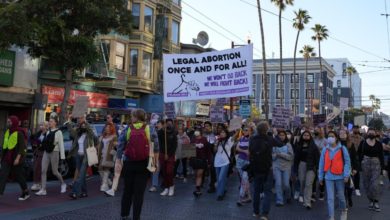January 14, 2013
At the conclusion of a year that has been marked by its animosity towards women, and while all heads were turned towards the newest string of austerity measures as we went over the “cliff”, the U.S. Congress quietly allowed the Violence Against Women Act (VAWA) to slip into non-existence
VAWA was signed into law in 1994, following a two-decades long struggle to gain recognition and win protections for survivors of domestic violence. For the 18 years since, the Act has allocated $1.6-1.9 million annually to organizations that support survivors (such as hotlines, shelters, and resource centers) and to assist in the prosecution of perpetrators of violence against women (including domestic violence, sexual assault, and stalking). With the expiration of VAWA at the beginning of this year, those funds are no longer available for these important services.
The refusal to reauthorize VAWA is another in a growing list of attacks targeting women over the last few years. We have been hit with more and more restrictions to our access to reproductive care services, highest numbers living in poverty now in nearly the last two decades, slashes to the social services that are so important to providing for our families. And now this.
Every Congress since 1994 has reauthorized VAWA. Instead, this year, the reauthorization vote became a political debate over the right of protection for some of the most vulnerable groups in society when it comes to domestic violence. This debate focused on the right to protection and support for Native American women, undocumented women, and the LGBT community. An expanded version of the bill up for the vote would have extended coverage to an additional 30 million people who are currently dubiously protected.The House version of the bill that was passed last May, H.R. 4970, eliminated these communities from being covered by the Act. The political stalemate became a tool for the right wing to not only deny these groups additional coverage but to allow the Violence Against Women Act to lapse.
No debate is necessary. According to the Justice Department, nearly half of Native American women will experience rape, physical violence or stalking from a partner. Nearly 40% will experience spousal abuse. Those who are married to non-Native men make up about half of those abused by their spouses. Under present law, these men cannot be prosecuted by tribal authorities, and far too often there is very little follow-up by law enforcement outside of the reservation.
Immigrant women working in the agriculture industry, according to a 2010 survey, report that approximately 80 percent of them have been subjected to sexual harassment at their workplaces. In parts of California, the fields are called “fil de calzon” (or “fields of panties”) because so many of the women have been raped by their supervisors there. However, for the many women without documents, speaking up about their abuse at work and at home puts them at risk of deportation and the destruction of their families. Undocumented immigrants are exceptionally vulnerable to protracted domestic violence tied to abusers’ use of immigration status as a tool of power and control. So instead of getting help and trying to put a stop to the violence, many women are driven to remain silent.
The original passage of VAWA and its various reauthorizations benefited all immigrants. They include critical immigration protections for victims of violent crime, including domestic abuse by U.S. citizens and green card holders. It is criminal that the right-wing racists in the House of Representatives sought to strip many of these protections in H.R. 4970, not to mention Congress’s ultimate failure to expand them. Yet, the racist efforts to eliminate VAWA-based immigration protections failed. This defeat shows the power that the masses of working people, including women and immigrants, hold.
Finally, the LGBT community experiences domestic violence at about the same level as the heterosexual community (roughly 25%). However, they are more likely to be turned away when they reach out for help. In 2010, the National Coalition of Anti-Violence Programs found that 45 percent were turned away when they sought help from a domestic violence shelter and nearly 55 percent of those who sought protection orders were denied them.
It is plain wrong to exclude these groups from receiving any sort of protection or support to deal with the violence that they are subjected to. To say that they should not be included means that we should tolerate these forms of violence as acceptable. And they are not.
A movement against sexual violence against women, sparked by the gang rape and cover up in December, has become a mass movement in India and begun to spread elsewhere. In Steubenville, Ohio, protests were organized following the gang rape of a young woman by several high-school athletes who posted photos of the attack online. Internet activists revealed corruption and cover-up by local authorities and federal prosecutors that fueled outrage nationwide.
Now is the time to reauthorize and expand the VAWA, not let it lapse. We need a VAWA that protects all of us but we live in a society where violence against women is all too commonplace, and all too frequently condoned.
It was the struggle of women in the 1980s and 1990s that brought the issue of domestic violence out into the public light. It was their struggle that won the Violence Against Women Act in 1994. It is time for us to take up the banner in our raised voices and say that it is not acceptable for us to continue being the victims of violence and to demand that it is time for attitudes and policies to change. It is time to fight against the continuation of this sexist violence because it is quite literally our lives at stake.





